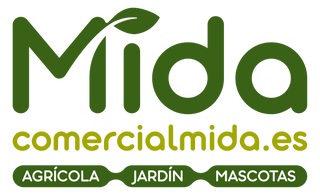On a dairy farm, milking is the most important activity. It must try to reduce the contamination of milk to a minimum, in order to meet the high demands of consumers. For this, a milking routine must be established that must be respected by all the operators, in order to reduce the cases of mastitis (which produce economic losses).
Mastitis is an inflammatory reaction of the mammary gland that produces an increase in somatic cells (due to the presence of pathogens) and can lead to the loss of functionality of the gland. Inflammation occurs as a result of shock, presence of pathogens and/or toxins in the gland tissue. From the infectious point of view, mastitis is divided into environmental (produced by poor washing of the teats, not sealing them, in the drying of the cows) and contagious (it is found in the milk and in the mammary gland and is transmitted at the time of milking).
To reduce the incidence of mastitis, the following considerations must be taken into account:
-
Hygiene of livestock accommodation: Livestock facilities and bedding must be clean, dry and free of organic matter so that the hind legs and udder are clean.
- The operator must wear disposable gloves and clean clothing. If during milking the gloves get dirty, they should be changed.
Udder hygiene: before milking the teats should be cleaned. The use of water for cleaning is not recommended, because it carries dirt and bacteria to the tip of the teat. In the case of using water, subsequent drying must be very careful. If foam is applied, once it works, it should be dried with a dry cloth or paper towel. The use of towels is individual. The first 2-3 spurts of milk should be discarded, since they are the ones with the highest bacterial load and allow cases of mastitis to be detected. To detect it, the California test can be used.
Source: https://www.buscagro.com/details/Guia-practica-para-el-control-de-mastitis-en-vacas-lecheras_73891.html
After milking, the sphincter remains open for a short time. For this reason, the use of a post-milking sealant is recommended, which in addition to sealing, moisturizes the udder and prevents cracks.
- Excessive milking should be avoided, as a way of caring for the integrity of the udder.
- Milk filters should be checked. In them, the presence of mastitis and dirt on the udders can be observed.
- The milking parlor must be clean and designed with materials that are easy to clean and disinfect.
After milking, the milk must be handled correctly. It must follow a cold chain from milking to consumption. The milk storage area must be clean. The storage equipment must be made of a suitable material, be properly refrigerated (according to the frequency of collection) and must be properly cleaned (preferably shortly after milk collection).
Advice of Commercial Mida
It is recommended to follow the same milking routine every day. In the case of changes, it must be adjusted. The incidence of mastitis should be minimized, emphasizing hygiene to avoid unnecessary economic losses.


